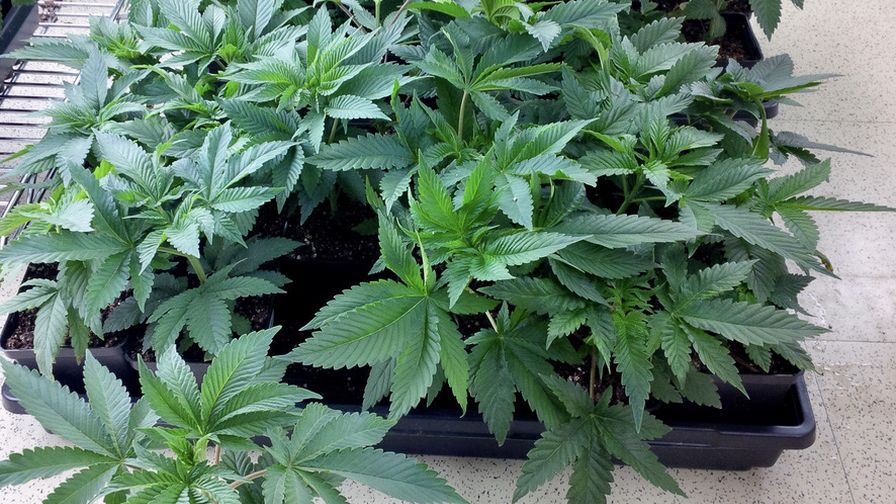Three Tips for Shortening a Cannabis Grower’s Time to Market
 Cultivation businesses should have saleable products within a year of receiving their license. While there is nothing that cultivators can do to make their plants grow faster, there are steps that start-ups can take to shorten their time to market. If a first-mover advantage is desirable for your business, consider the following three tips for beating your competition to the finish line.
Cultivation businesses should have saleable products within a year of receiving their license. While there is nothing that cultivators can do to make their plants grow faster, there are steps that start-ups can take to shorten their time to market. If a first-mover advantage is desirable for your business, consider the following three tips for beating your competition to the finish line.
Buy Starter Plants
New cultivation businesses can shave months off their start-up timeline by launching production with starter plants. Not all jurisdictions allow licensed cultivators to buy live cannabis plants, so clarify the legality of this option before moving forward. In states or countries where this is permitted, investigate acquiring live plants from any of the following sources:
- Caregivers
- Home growers
- Licensed commercial cultivators
- Dispensaries that sell live plants
Although purchasing several hundred plants to start each crop is not a sustainable strategy for the long term, rapid arrival to market can help justify the price. There may be royalties attached to each plant purchased or some agreement to pay a percentage of the value of the final harvest. These one-time payments will undoubtedly eat into a company’s profits from the very first harvest, but if rapidly securing a market position is vital to your business, purchasing live plants is certainly a feasible option.
Dispensaries often sell a mix of clones at retail. If they don’t have a cultivation department that grows these clones for sale, identify the grower providing them to the dispensary. If it’s a commercial grower, they likely have the capacity to fulfill a large order of starter plants. As part of the agreement, request to see the growing facility, the stock plants, and the propagation department. If the stock plants are unhealthy or the propagation area is unkempt, look elsewhere. Buying hundreds of infected cuttings is not going to help your business. But if the facility is professional and clean, and the company has a history of successfully propagating large volumes of cuttings, it may be a golden opportunity to come to market at record speed. Launching a grow operation with healthy, clean, and mature starter plants could shorten the crop cycle to just ten weeks.
Come to Market With Small Lots
Sometimes how fast is more important than how much. First-mover advantage is not a question of volume; it’s a question of speed. Being first with quality product in a hot new market — even with only a little to sell — is better than waiting an extra 10 months until you have something more compelling to offer. Selling out in a new market is not a bad thing. Cannabis enthusiasts will post photos and reviews to social networking sites within minutes of purchasing your product. If the quality is excellent, a limited supply will only help to drive consumer interest in your business. The positive buzz will last until your next, larger harvest comes to market.
The key with small lots of cannabis is to ensure that the crop is high quality. Consider harvesting only the “cream of the crop” in terms of flower size and quality, and then hand-trim the harvest for an impeccable presentation at retail. Since slower drying results in a smoother end product, don’t rush the drying process. Also, consider establishing a way for interested customers to track the progress of your next harvest. If the quality of your first product is good, anticipation will build for the next crop already in the pipeline. Providing customers with an option to track crop progress — perhaps by video cam on your website — will draw people to your site and help familiarize new customers with your brand and company.
Start Fast With Grow Pods
Grow pods are an excellent option for rapidly expanding cultivation capacity while simultaneously undergoing a larger facility build-out. Grow pods are ready-to-use, 40-foot-long shipping containers that have been retrofitted into self-contained growing units. They are true plug-and-play cultivation options since they are delivered fully equipped with grow lights, air handling units, and drainage systems. All that’s required to begin cultivating is a nearby electrical source and plenty of water.
Most suppliers offer a six-week lead time from the date of purchase, and there is a strong market for second-hand grow pods should the company choose to sell them once the main facility is operational. Alternatively, many growers elect to keep these pods onsite and use them for R&D, tissue culture, or stock plant production. These closed-loop, independent grow rooms are perfect for experimentation or cultivation projects — like breeding — where it’s imperative the activity is isolated from the rest of production. Launching cultivation with grow pods can help shave several months off your time to market, and they have several alternative uses once a cultivator begins selling their first products.
Although growers can’t speed up plant development, they can speed up how soon they come to market. If time is of the essence, a little creative thinking can help new cannabis cultivators cross the finish line ahead of the competition.









